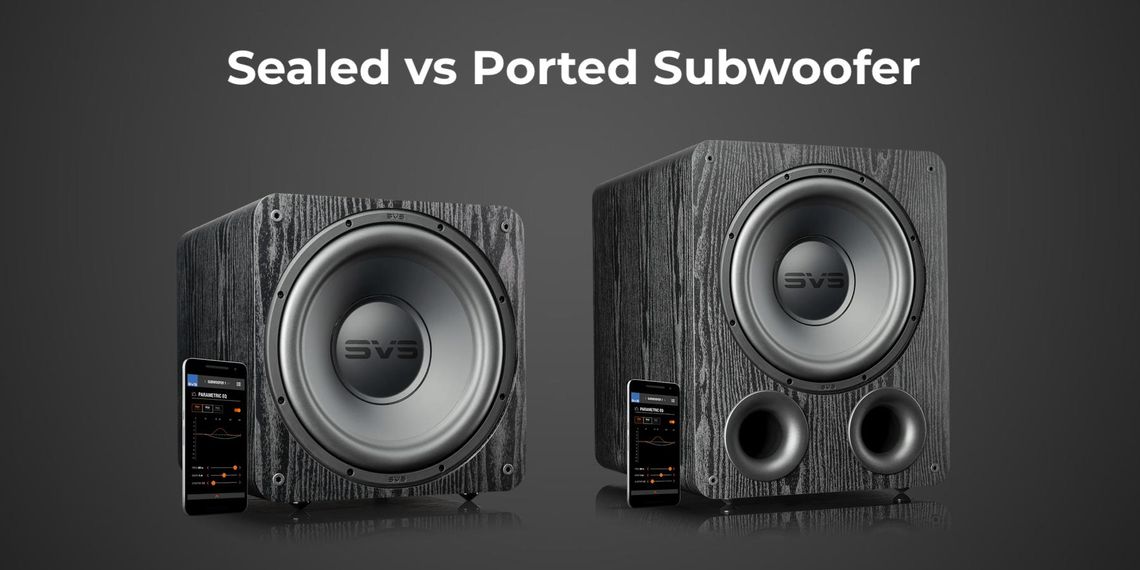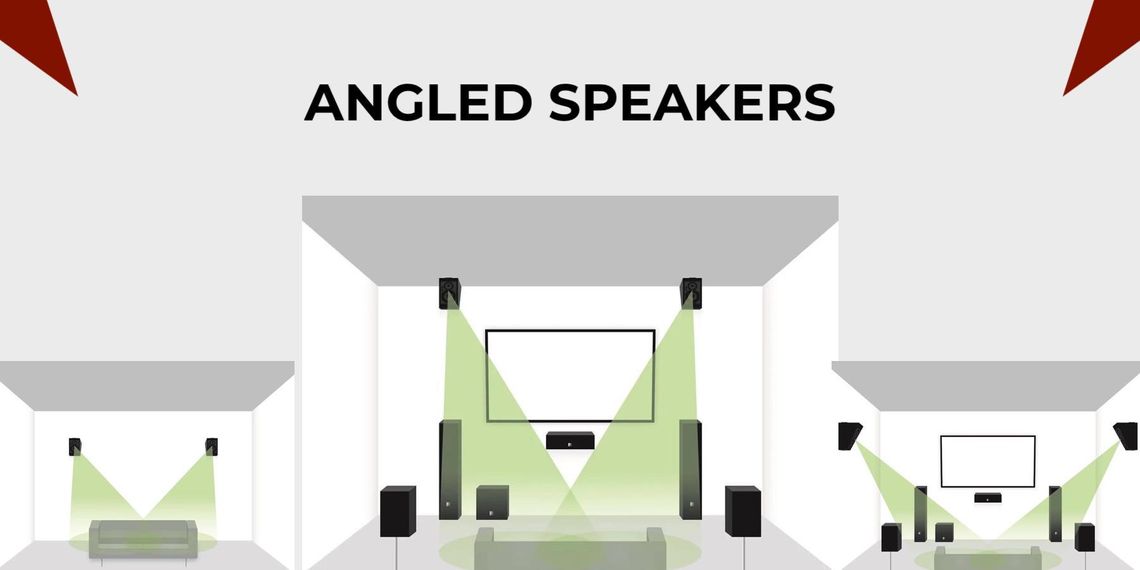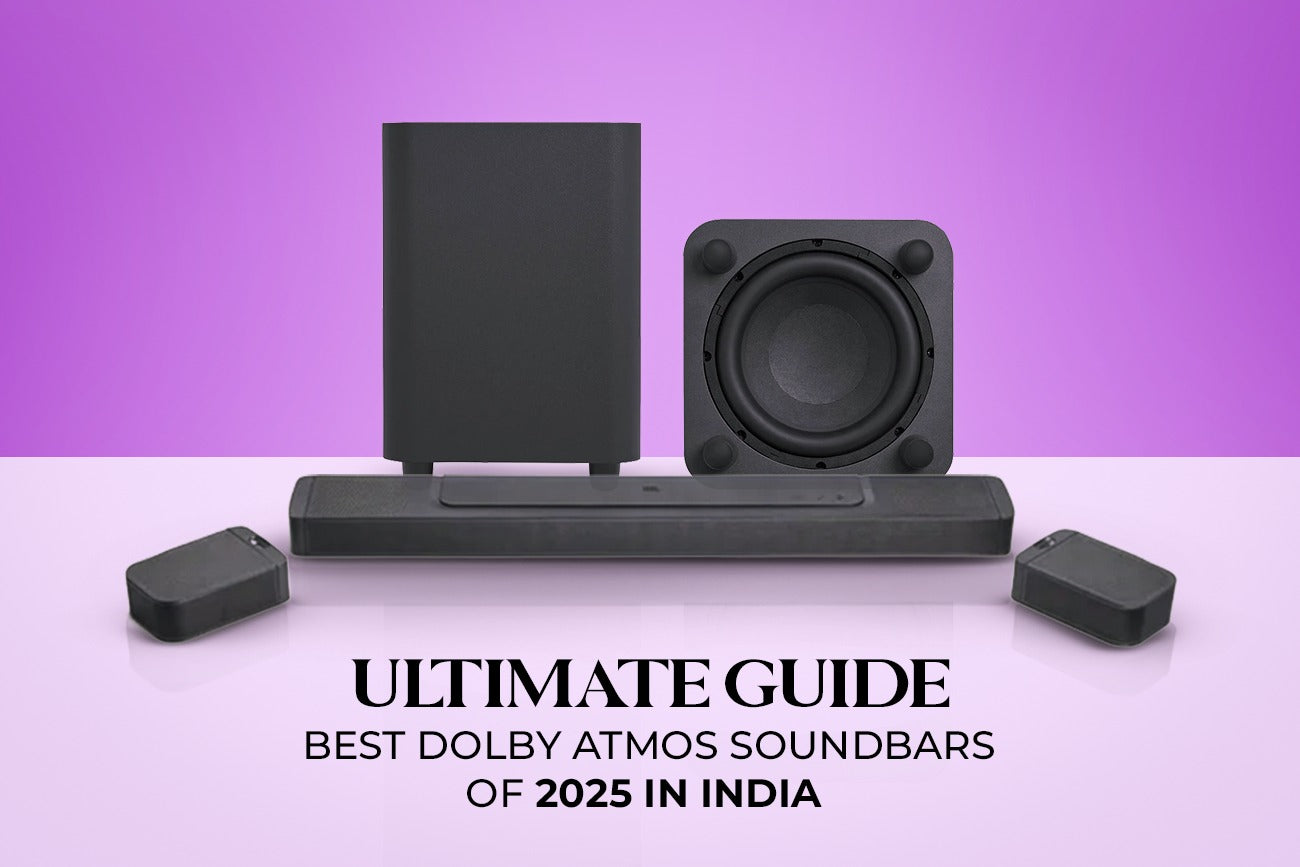2 Sides of the same coin! This age old question always puts most subwoofer buyers in a dilemma.
Which one is suitable for my requirements?
How do I know which type will work in my room?
Which one can I expect to get more bass out of?
What are the advantages & disadvantages of either design?
Which one provides the best quality of low frequencies?
These are some of the other questions that get tagged along with the ‘ported vs sealed subwoofers’ queries that not only are valid but also add a lot of confusion in during the purchasing process.
What is a subwoofer all about?
A subwoofer basically is enhancing the lower frequencies spectrum that are termed as Bass or Sub Bass which are omnipresent in the audio mixes be it in music and movies sound spectrum. These frequencies are found in the range of 20-200Hz. The primary job of a subwoofer is to produce these frequencies in a way that they not only be the main source generators of these frequencies but also ensure that by doing so, the main speakers (inwall/inceiling, bookshelf or tower/floor standing) are no longer solely responsible for providing these frequencies, thereby they are concentrating on generating the remaining frequencies in the upper and mid band of the sound frequency spectrum. By doing so, these are not overworked or stretched to their limits as producing lower frequencies takes a lot out of a loudspeaker's capabilities. Subwoofers also amplify and improve the overall sound experience one gets from their system.
Ported Vs Sealed
There are two schools of thought when one is talking of generating the bass and sub bass frequencies from a subwoofer. One type of subwoofer is called ported and the other is called sealed. As their names imply, ported types of subwoofers have a port or vent in the enclosure, whilst sealed subwoofers have none.
Ported Subwoofers
These types of subwoofers generally have a larger enclosure, meaning more volumetric size that results in deeper levels of bass and sub bass frequencies. All this also creates a lot of pressure that gets released in the form of air being vented through the port/vent. The larger enclosure also helps in deeper bass extension at relatively higher efficiency. Therefore if one is looking for more bass impact, then ported subwoofers are the way to go and most certainly are the preferred choice in applications of home theater bass management as they provide a lot of heavy rumble and dynamic impact for one's movie watching pleasure. The room is energized a lot more as well thereby making system integrators deliver the results pretty effortlessly. One must also keep in mind that a badly designed ported subwoofer can be quite detrimental to the overall sound as they contribute to boomy, muddy and bloated bass that is a certain NO NO as far as a subwoofer’s key performance attributes is concerned. Ported subwoofers are also ideally meant for larger rooms as they can cover such rooms far better and in lower numbers than sealed subwoofers.
The downsides to ported subwoofers is that one loses quality in the quest for quantity. They cannot deliver the finesse, definition and sophistication when compared to sealed subwoofers and that is why they most certainly aren’t preferred for music listening applications. This to a very extent is true but there are always exceptions and certain brands do have ported subwoofers that can come very close to delivering these requirements. We always recommend that you connect with our sales team to guide you with your intended purchase based on the application of the subwoofer in your planned scheme of a system set up.
Sealed Subwoofers
These types of subwoofers are relatively smaller in form factor, which make them ideal for smaller to medium sized rooms, more so when space and particularly subwoofer placement real estate is at a premium. Sealed subwoofers provide tight, accurate, well defined and sophisticated bass that audiophiles and music listening enthusiasts immediately relate with as the faster transients make it far more enjoyable as far as music playback is concerned. The caveat here is that music genres containing a lot of deep bass are where sealed subwoofers might be found wanting with regard to the bass extension as such. This kind of music also invariably exposes another weakness in sealed subwoofers, that being able to not play at high sound pressure levels(SPL) for longer periods of time.
Summary
Both types of subwoofers have their strengths and weaknesses.
Both have certain applications where one is favored over the other.
Listening environments also play a huge part in determining which type is better suited over the other.
Ultimately, there is no right or wrong in either of the above types of subwoofers as it entirely depends on the room size, type of content that would be played as well as the listeners preferences with regards to the type of bass they are looking for. Both are therefore having a place in the relevant equation and so it becomes very important for the end user to consider all these factors, prior to zeroing in on the type of subwoofer to suit their individual requirements. Our team is always there to help you in such, so please do pick their brains as and when required. Our experience center also is valuable for understanding and experiencing the differences between the two.




Leave a comment
All comments are moderated before being published.
This site is protected by hCaptcha and the hCaptcha Privacy Policy and Terms of Service apply.